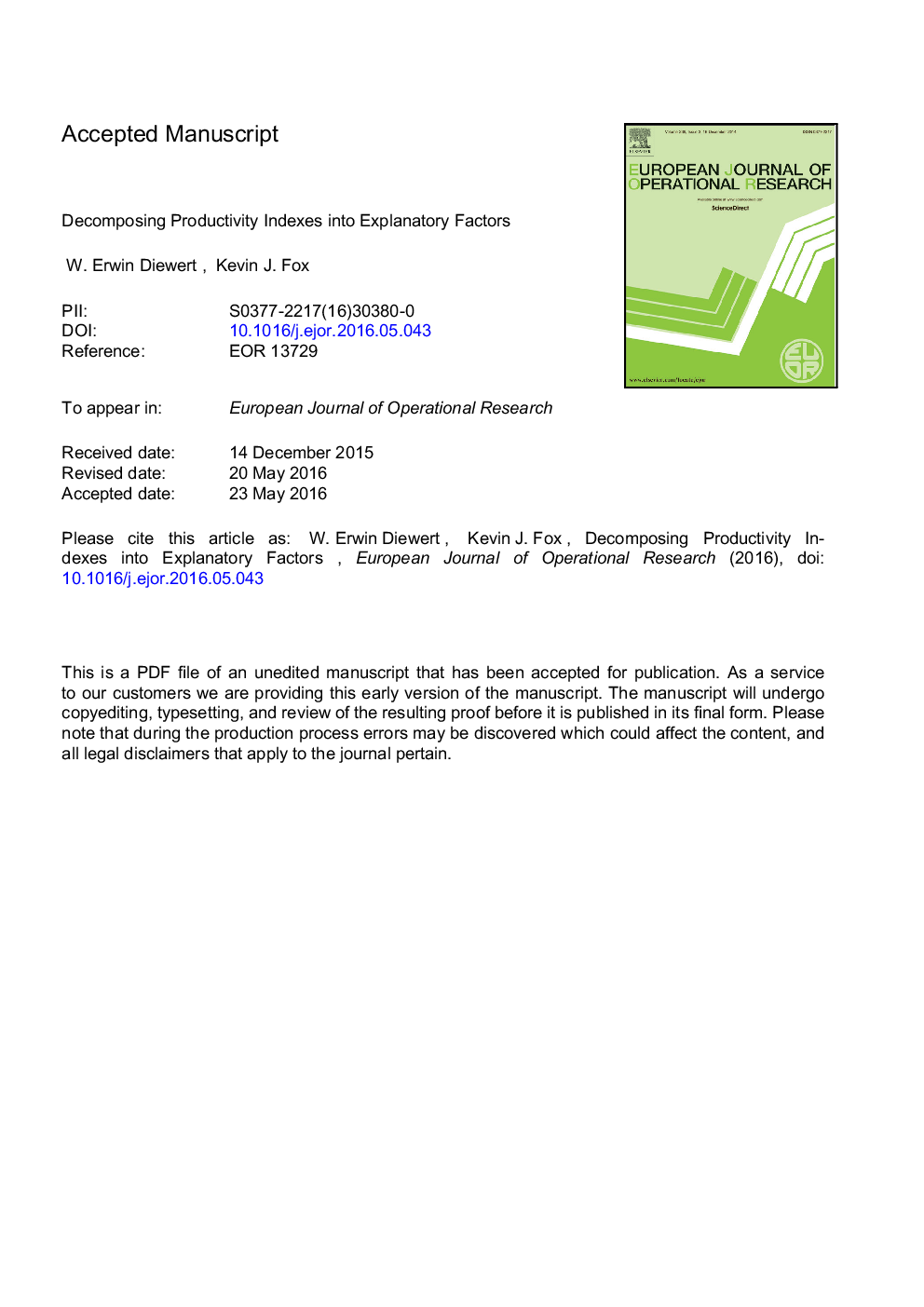| Article ID | Journal | Published Year | Pages | File Type |
|---|---|---|---|---|
| 4960107 | European Journal of Operational Research | 2017 | 41 Pages |
Abstract
Productivity measures are increasingly regarded as key indicators of economic performance. Identifying sources of productivity growth is of interest to both firms and policy makers. This paper revisits the debate on how to decompose productivity growth into explanatory factors, with a focus on extracting technical progress, technical efficiency change, and returns to scale components. Using Bjurek's concept of the Malmquist index, introduced into production theory in a systematic way by Caves, Christensen and Diewert, a reference technology is required to define the components of interest. Unlike other approaches, ours do not make any convexity assumptions on the reference technology but instead follows the example of Tulkens and his coauthors in assuming that the reference technology satisfies free disposability assumptions. A new decomposition of a productivity index is provided, with the existence and properties of the underlying distance functions of the decomposition proven under relatively unrestrictive assumptions. The paper also provides for the first time a theoretical justification for the geometric average form of the Bjurek productivity index. These rigorous theoretical contributions provide significant avenues for enhanced understanding of empirical productivity performance.
Related Topics
Physical Sciences and Engineering
Computer Science
Computer Science (General)
Authors
W. Erwin Diewert, Kevin J. Fox,
